What is On-Page SEO and Why is it Important?
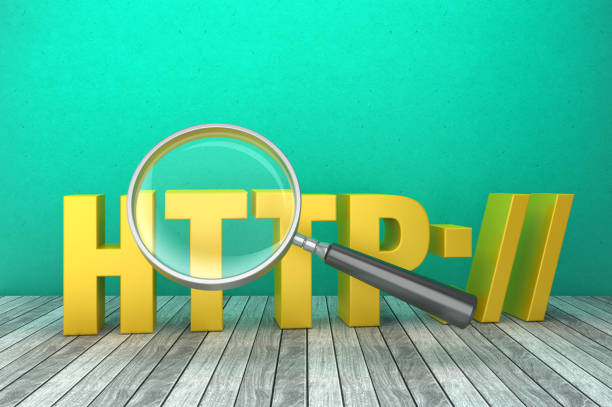
On-Page SEO refers to the set of actions you take within your website to improve its ranking in Google and other search engine results.
These actions include optimizing content, site structure, title tags, meta descriptions, and other key website elements.
On-page SEO is crucial for visibility in search results.
If search engines cannot easily understand your content, they will not give your site a good ranking.
In fact, On-Page SEO helps search engines to identify the topic of your page and understand its relevance to user queries.
The importance of On-Page SEO lies in the complete control you have over it.
You can optimize your content, improve site structure, and provide a better user experience for visitors.
All these factors contribute to improving your site’s ranking and attracting more organic traffic.
Without proper On-Page SEO, your efforts in Off-Page SEO will also not yield desired results.
In other words, On-Page SEO is the foundation upon which your SEO success is built.
Therefore, if you want to improve your site’s ranking in search results and attract more organic traffic, you must pay special attention to On-Page SEO.
It is a continuous process that requires analysis, planning, and precise execution.
Are you frustrated with your online store’s low conversion rate?
Rasweb, with professional e-commerce website design, is your definitive solution!
✅ Increase your sales and revenue
✅ Unparalleled user experience for your customers
⚡ Get a free consultation now!
Target Keyword Research
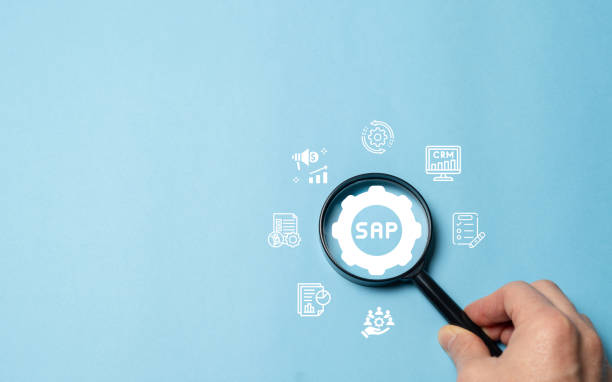
Keyword research is one of the most important steps in On-Page SEO.
The goal of this research is to find the words that users employ to search for your products or services.
These keywords should be relevant to your business and have a suitable search volume.
To perform keyword research, you can use various tools such as Ahrefs, Ubersuggest, and Google Keyword Planner.
After finding relevant keywords, you should prioritize them based on search volume, competition, and relevance to your business.
Keywords with high search volume and lower competition are usually the best options.
Additionally, you should choose keywords that are precisely related to your website’s content.
Using irrelevant keywords can lead to penalties for your site by search engines.
Furthermore, you should also pay attention to keyword diversity.
Also use Long-Tail Keywords.
These keywords usually have lower search volume but also less competition and can attract more targeted traffic to your site.
By using diverse and targeted keywords, you can improve your On-Page SEO and enhance your site’s ranking in search results.
Optimizing Titles and Meta Descriptions

Titles and meta descriptions are key elements in On-Page SEO that are displayed in search results.
Titles should be engaging, concise, and contain primary keywords.
The length of titles should not exceed 60 characters to be fully displayed in search results.
Meta descriptions should also be brief and appealing, encouraging users to click on your site’s link.
The length of meta descriptions should not exceed 160 characters.
When optimizing titles and meta descriptions, you should also pay attention to their relevance to the page’s content.
The title and meta description should accurately describe the page’s content and include relevant keywords.
Using irrelevant keywords can lead to a decrease in click-through rate (CTR) and consequently a reduction in your site’s ranking.
On-Page SEO and the correct use of heading tags (H1, H2, H3, etc.) are also very important.
The H1 tag should be the main title of the page and include the primary keywords.
H2, H3, and other tags should be used to segment content and provide a logical structure to the page.
Proper use of heading tags helps search engines better understand the page’s content and give it an appropriate ranking.
| Element | Description | Importance in On-Page SEO |
|---|---|---|
| Title | Page title displayed in search results | Very High |
| Meta Description | Brief page description displayed below the title in search results | High |
Optimizing Page Content
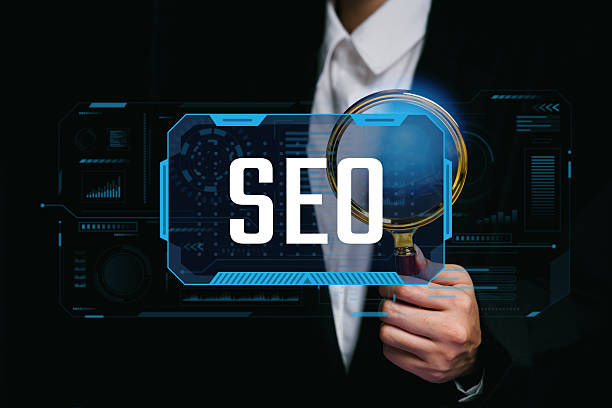
Page content is the heart of On-Page SEO.
Your content must be valuable, relevant, and engaging.
It should answer user questions and meet their needs.
Your content must be unique and not copied.
Search engines penalize duplicate content.
When optimizing page content, you should also pay attention to keywords.
Use primary keywords naturally within your content.
Avoid overusing keywords (Keyword Stuffing).
This can lead to your site being penalized by search engines.
Also, use LSI (Latent Semantic Indexing) keywords.
These words are related to your main keywords and help search engines better understand the topic of your page.
Furthermore, you should also pay attention to the readability of your content.
Use short paragraphs and simple sentences.
Use images, videos, and other multimedia elements to make your content more engaging.
On-Page SEO and ensure your content is also optimized for mobile.
Today, many users access the internet via mobile devices.
If your site is not optimized for mobile, you will lose a significant amount of traffic.
Does your company’s website create a professional and lasting first impression on potential customers? Rasweb, with professional corporate website design, not only reflects your brand’s credibility but also paves the way for your business growth.
✅ Create a powerful and reliable brand image
✅ Attract target customers and increase sales
⚡ Get a free consultation!
Image Optimization
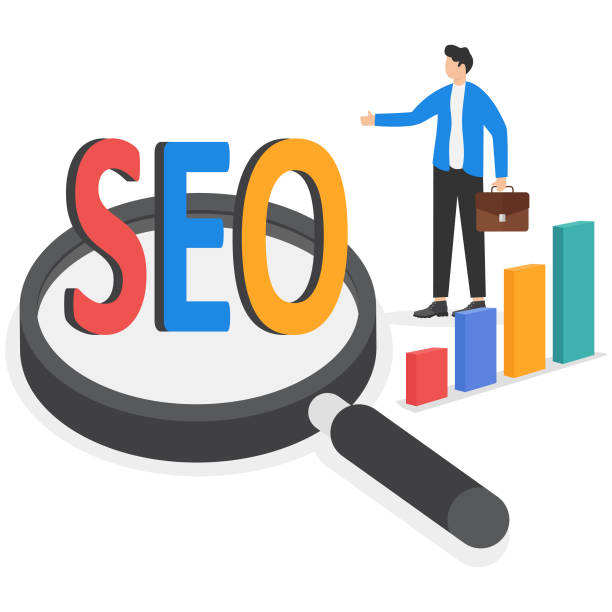
Images play an important role in the appeal and On-Page SEO of a website.
High-quality images can keep users on your site longer and reduce the bounce rate.
To optimize images, you should follow a few tips.
First, save your images in the appropriate format.
JPEG and PNG formats are usually the best options.
JPEG is suitable for images with many colors, and PNG is suitable for images with fewer colors and text.
Second, upload your images with the appropriate size.
Large images slow down site loading speed.
You can use image compression tools to reduce image file size without losing quality.
Third, choose appropriate file names for your images.
The file name should contain keywords related to the image.
Fourth, write alternative text (Alt Text) for your images.
Alt text helps search engines understand the subject of the image.
Alt text is also useful for users who cannot see images (such as visually impaired users).
In the alt text, use keywords related to the image, but avoid overdoing it.
By optimizing images, you can improve your site’s On-Page SEO and enhance its ranking in search results.
Optimizing URLs

URLs are another important factor in On-Page SEO.
URLs should be short, readable, and contain relevant keywords.
URLs should not contain uppercase letters, spaces, or special characters.
Use hyphens (-) instead of spaces.
URLs should have a logical structure and reflect your site’s architecture.
For example, if you have a page about On-Page SEO training, its URL could be: `example.com/blog/amoozesh-seo-dakheli`.
This URL is short, readable, and contains relevant keywords.
Avoid long and complex URLs.
These URLs are unpleasant for both users and search engines.
Also, you should avoid changing URLs after publishing a page.
Changing URLs can lead to a loss of your site’s ranking.
If you are forced to change a URL, be sure to use a 301 redirect to guide users and search engines to the new URL.
A 301 redirect informs search engines that your page has been permanently moved to the new URL.
By optimizing URLs, you can improve your site’s On-Page SEO and provide a better user experience for visitors.
Website Loading Speed
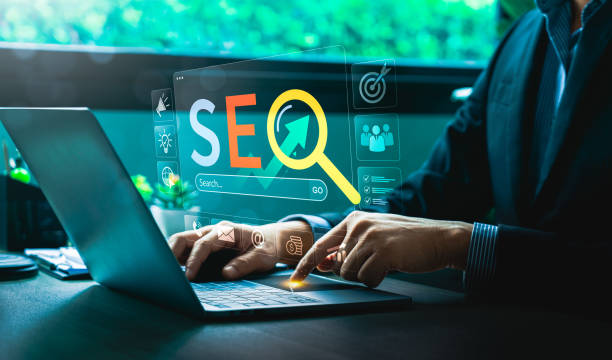
Website loading speed is one of the most important factors in On-Page SEO and user experience.
Users who wait for a long page load are likely to leave your site and go to another.
Search engines also value site loading speed and penalize sites with slow loading times.
To improve site loading speed, you can take various actions.
First, optimize your images (as explained in the previous section).
Second, use a lightweight and optimized Content Management System (CMS).
WordPress is one of the most popular CMSs, but if not properly optimized, it can reduce site loading speed.
Third, use quality hosting.
Inadequate hosting can severely decrease site loading speed.
Fourth, use caching.
Caching allows users’ browsers to store your site’s files and load your site faster on subsequent visits.
Fifth, use Content Delivery Networks (CDNs).
CDNs store your site’s files on various servers worldwide and allow users to download files from the nearest server.
This improves site loading speed for users accessing your site from different parts of the world.
| Factor | Impact on Loading Speed | Improvement Solution |
|---|---|---|
| Image Size | Reduced Speed | Image Compression |
| Hosting | Reduced Speed | Choosing Quality Hosting |
| Cache | Increased Speed | Enabling Browser Cache |
Internal Linking

Internal Linking refers to creating links between different pages of your site.
Internal linking helps search engines better understand your site’s structure and determine the importance of different pages.
Internal linking also helps users navigate your site easily and find the information they need.
When creating internal links, you should pay attention to the relationship between pages.
Links should lead to relevant and valuable pages.
Use appropriate Anchor Text.
Anchor text is the text associated with a link.
The anchor text should contain keywords relevant to the destination page.
Avoid overusing keywords.
Anchor text should be natural and readable.
Also, you should pay attention to the number of links on each page.
The number of links should not be too high.
Too many links can confuse users and diminish the value of each link.
On-Page SEO and creating internal links regularly and purposefully can help improve your site’s ranking in search results and attract more organic traffic.
How much does losing business leads due to an unprofessional website cost you? With professional corporate website design by Rasweb, solve this problem forever!
✅ Increase credibility and trust among potential customers
✅ Easier acquisition of new business leads
⚡ Get a free consultation now!
Mobile Optimization
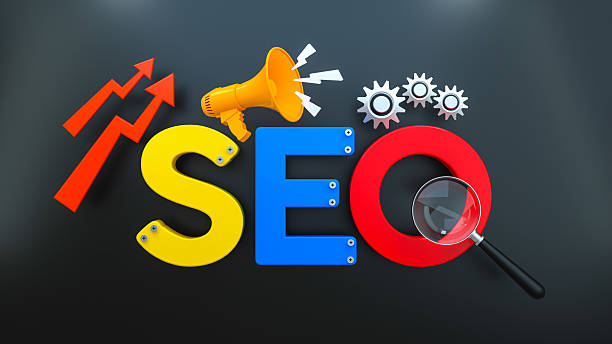
Mobile Optimization is of immense importance today.
More than half of internet traffic comes from mobile devices.
If your site is not optimized for mobile, you will lose a lot of traffic, and your site’s ranking in search results will decrease.
To optimize your site for mobile, you should use a Responsive Design.
Responsive design allows your site to automatically adapt to the screen size of various devices (such as mobile, tablet, and desktop).
Also, you should optimize your site’s loading speed for mobile.
Mobile users typically use the internet at slower speeds.
Therefore, site loading speed is very important for them.
Furthermore, you should use readable and large fonts.
Small fonts make reading difficult on mobile devices.
Also, you should make buttons and links large enough for mobile users to easily click on them.
Google attaches great importance to mobile-friendliness and gives a better ranking to sites with good On-Page SEO on mobile.
By optimizing your site for mobile, you can provide a better user experience for visitors and improve your site’s ranking in search results.
Continuous Review and Improvement

On-Page SEO is an ongoing process that requires continuous review and improvement.
You should regularly review your site’s performance in search results and identify weaknesses.
You can use various tools such as Google Analytics and Google Search Console to monitor your site’s performance.
These tools provide you with valuable information about site traffic, keywords, and technical site errors.
After identifying weaknesses, you should take action to improve them.
You may need to optimize content, site structure, or site loading speed.
Also, you should pay attention to changes in search engine algorithms and adapt your site to these changes.
Search engines constantly update their algorithms, and sites that fall behind these changes lose their ranking in search results.
Therefore, On-Page SEO is a continuous process that requires commitment and perseverance.
By continuously reviewing and improving your site, you can maintain your site’s ranking in search results and attract more organic traffic.
Additionally, by analyzing competitors and their strategies, you can gain new ideas to improve your On-Page SEO.
Frequently Asked Questions
| Question | Answer |
|---|---|
| What is On-page SEO? | On-page SEO refers to a set of actions performed within your website to improve its ranking in search engine results. This includes optimizing content, site structure, and HTML code. |
| Why is On-page SEO important? | On-page SEO helps search engines understand your page’s content and determine if it is relevant to searchers’ queries. It is the foundation of any successful SEO strategy. |
| What are the key elements of On-page SEO? | Page Title (Title Tag), Meta Description, keyword usage, image optimization, heading structure (H1, H2, …), internal linking, and content quality are key elements. |
| How to optimize the Title Tag? | The title tag should include the main keyword, be attractive and encouraging for clicks, and be between 50 to 60 characters (or appropriate pixels) in length to be fully displayed in search results. |
| What role does Meta Description play in On-page SEO? | The meta description is a summary of the page content displayed below the title in search results. Although it doesn’t directly affect ranking, it helps SEO by increasing the click-through rate (CTR). |
| What is the importance of using heading structure (H1, H2, H3) in On-page SEO? | Headings structure the page content and make it easier to read. H1 is usually the main title of the page and should include the keyword. H2 and H3 are used to organize subsections and help search engines understand the content hierarchy. |
| How to effectively use keywords in content? | Keywords should be used naturally and logically throughout the content, including the introduction, body, and conclusion. Avoid keyword stuffing. |
| What steps are involved in optimizing images for On-page SEO? | It includes compressing images to reduce file size, using descriptive file names, adding appropriate alternative text (Alt Text), and optimizing the image title and description. Alt Text is crucial for accessibility and helping search engines understand image content. |
| What is Internal Linking and what are its benefits? | Internal linking means creating links from one page on your website to another page on the same website. This helps users navigate your site easily, distributes page authority across the site, and helps search engines better understand your site’s structure. |
| What is the importance of content quality in On-page SEO? | High-quality, accurate, comprehensive, and valuable content for users, is the cornerstone of On-page SEO. Search engines prefer content that meets user needs. Quality content leads to longer dwell time and reduced bounce rate, which are positive SEO signals. |
And other services of Rasweb Advertising Agency in the field of advertising
- Smart Marketing Automation: A fast and efficient solution for analyzing customer behavior with a focus on Google Ads management.
- Smart Marketing Automation: An innovative service to enhance SEO ranking improvement through key page optimization.
- Smart Custom Software: A professional solution for customer acquisition with a focus on SEO-driven content strategy.
- Smart Direct Marketing: A creative platform for improving online growth through intelligent data analysis.
- Smart Digital Advertising: An innovative service to enhance digital branding through Google Ads management.
And over hundreds of other services in internet advertising, advertising consulting, and organizational solutions
Internet Advertising | Advertising Strategy | Advertorials
Resources
Virgool – Comprehensive On-Page SEO Guide
Web Harkat – What is On-Page SEO?
Modiriat.com – On-Page SEO
Seokar – On-Page SEO Checklist
? With Rasweb Afarin, a specialist in comprehensive digital marketing services and personal website design, transform your business and have a powerful online presence.
📍 Tehran, Mirdamad Street, next to Bank Markazi, Kazeroon Jonubi Alley, Ramin Alley No. 6



